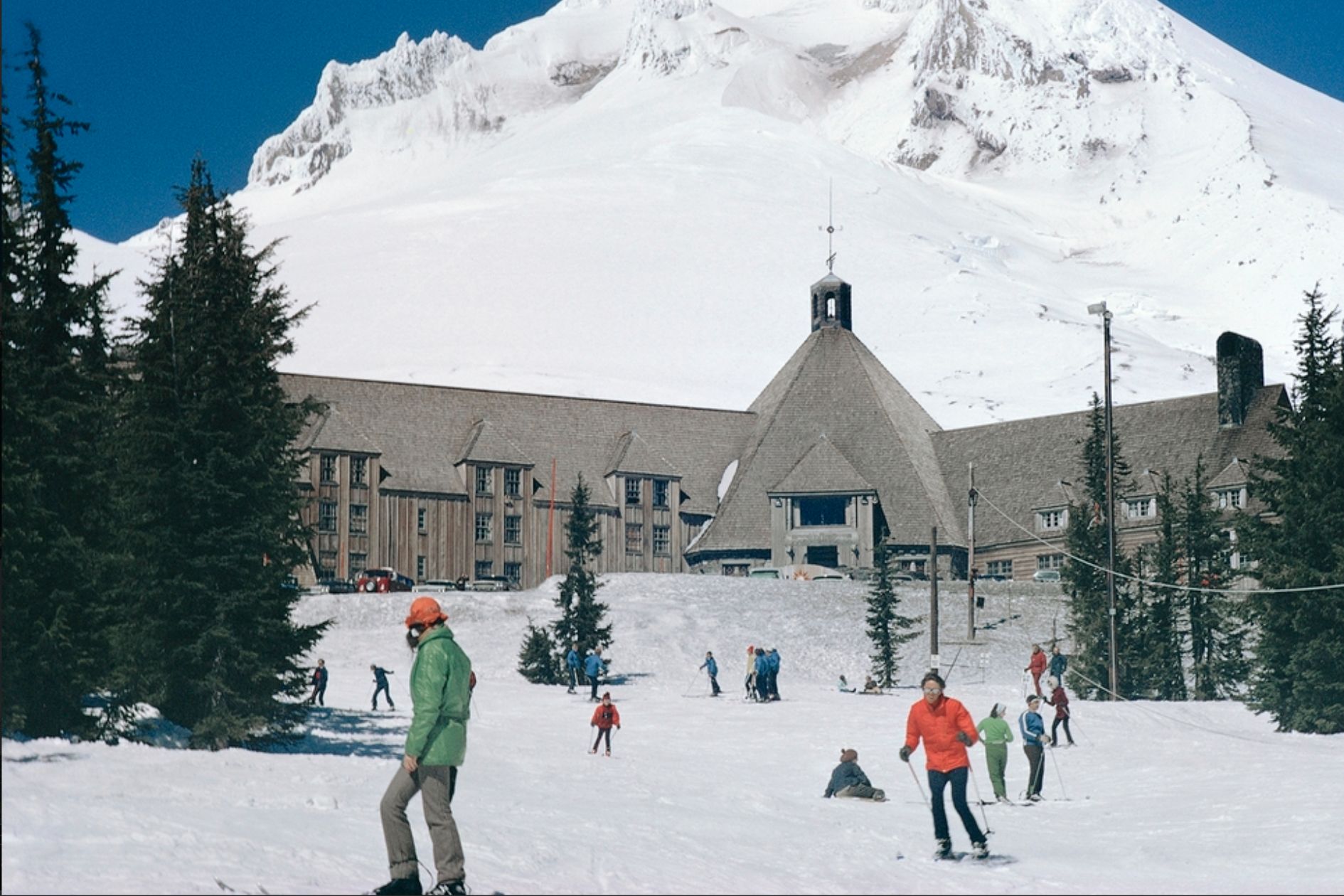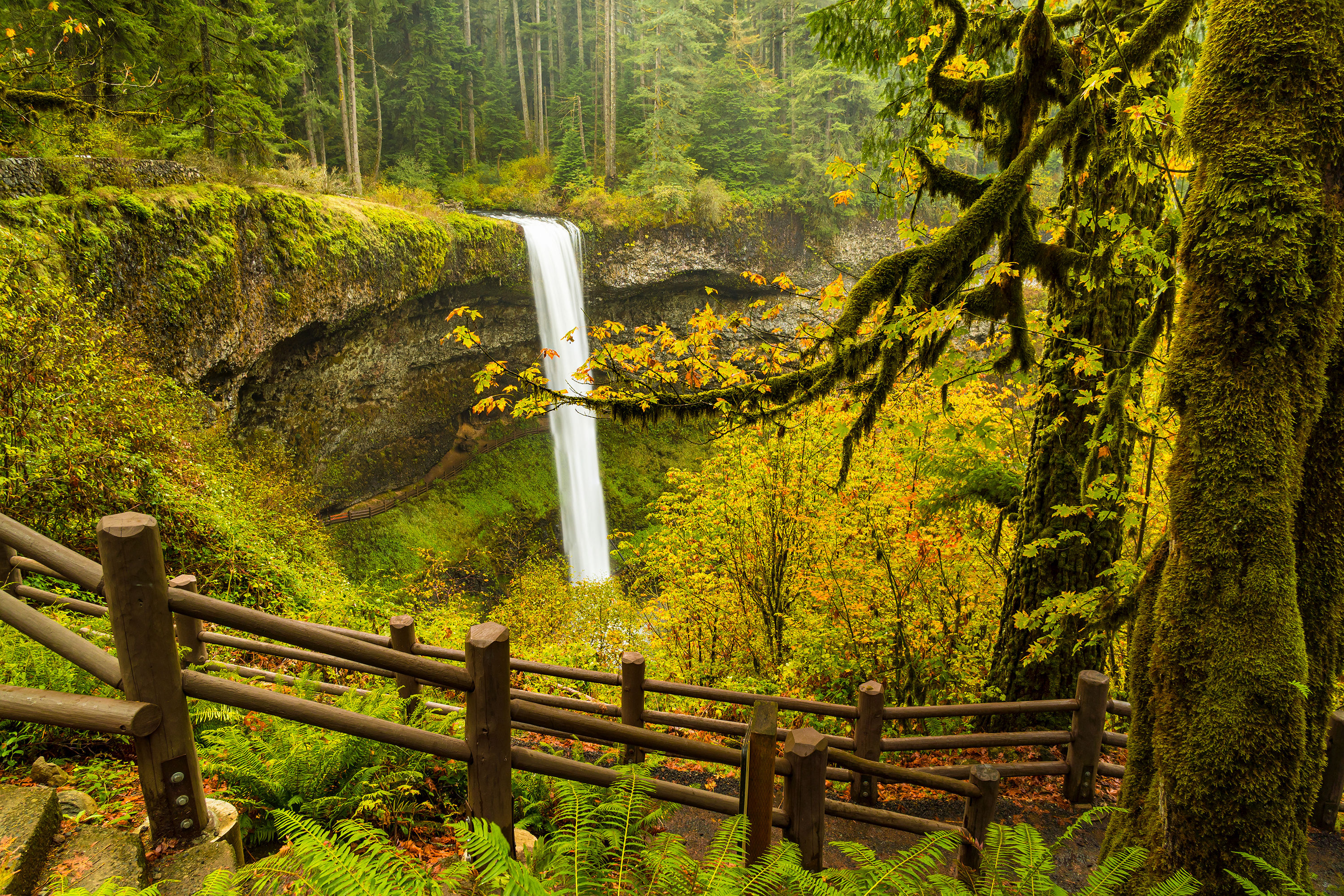91 Minutes to the Top of Mount Hood and Back Down Again
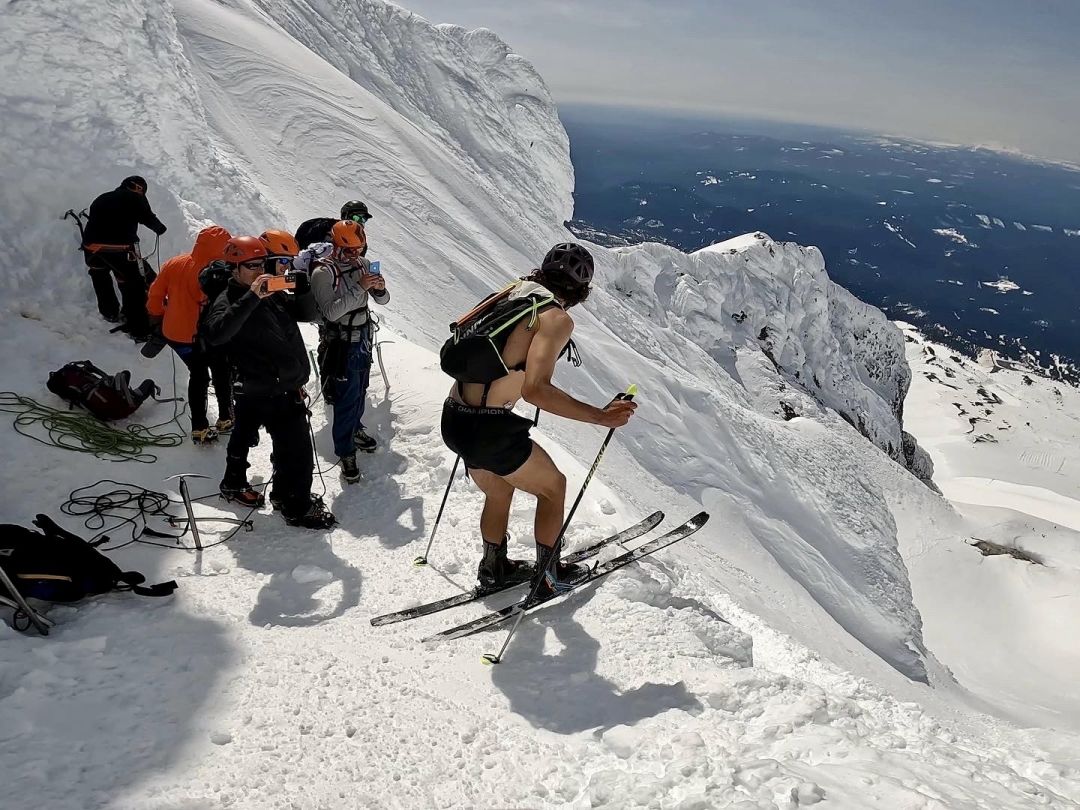
Jack Kuenzle poised to ski down Mount Hood, after making it from Timberline to the top in one hour and 16 minutes, breaking the previous fastest known time record.
Image: Courtesy of Wes Bochner
Should you have been up at Timberline Lodge last Sunday to catch the tail end of this season’s super-snowy spring ski season and seen Jack Kuenzle in the parking lot, you would have been forgiven a double take.
After all, it’s not that often that anyone hits the mountain stripped down to their skivvies and nothing else, let alone someone whose plan for the morning involves breaking the record for the fastest known time to get from the lodge to the top of the mountain and back down again, all in the amount of time it would take most of us to make and eat a leisurely breakfast.
Kuenzle, a 26-year-old extreme athlete originally from Connecticut who spent the winter sleeping in his van at high altitudes in Northern California to prepare for record-breaking attempts at Mount Hood and Mount Shasta, left the parking lot at Timberline at 9:48 am on Sunday. Exactly one hour, 31 minutes, and 31 seconds later he was back with a broken record under his belt. (Or rather, under his boxers–he heats up very quickly on uphill runs, he said in an interview with Portland Monthly, hence the lack of clothing.)
That’s more than 5,300 feet, in just under seven grueling miles—three-and-a-half to the top, and then back down again.
Uphill skiing, or skinning, has grown in popularity in recent years, particularly during the pandemic, when people were looking to get outside and to get away from crowds at ski resorts. Why wait in line when you can simply hike up to the top of the chairlift, and ski down on your own steam?
Kuenzle, though, is different. He prefers the backcountry to resort runs and got into extreme ski mountaineering as a way of training for ultra-long trail running competitions. (Next up: A 100 mile trail race in New Hampshire.) The sports, which he thinks could be a part of the Olympics in years to come, is new enough in North America that formal fastest-time records only exist on a handful of mountains across the United States, including Mount Washington in New Hampshire, Denali in Alaska, Mount Rainier in Washington, and Mount Hood.
The previous Mount Hood ascent record was one hour and 23 minutes; the reigning get-to-the-top-and-ski-down time was one hour and 44 minutes. A mere mortal, by contrast, would be doing well to make it up and back in six or seven hours.
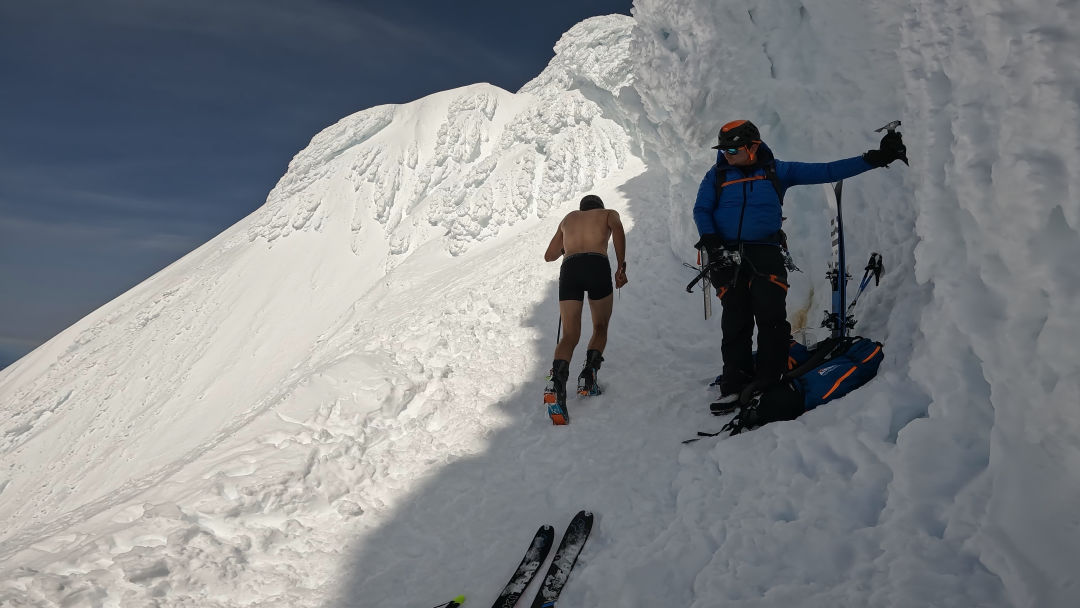
Kuenzle makes his way past a mountaineer on his way to the top of Mount Hood.
Image: Courtesy of Wes Bochner
All Kuenzle had with him was a pair of backcountry skis, which he carried on his back for a portion of his ascent, plus crampons, an ice axe, and ski poles. Along the way, he ran into fully-geared up, puzzled mountaineers making their own way up the south, who graciously stepped out of his path.
At the start, he attached a pair of snow-gripping “skins” to the bottom of his skis, which help to skim over the mountain on your way uphill. When he got to the Hogsback, which the Mountaineers define as a “wind-carved snow formation” on Hood’s south side climbing route, he switched to boots with crampons on them, carrying the skis on his back the rest of the way up.
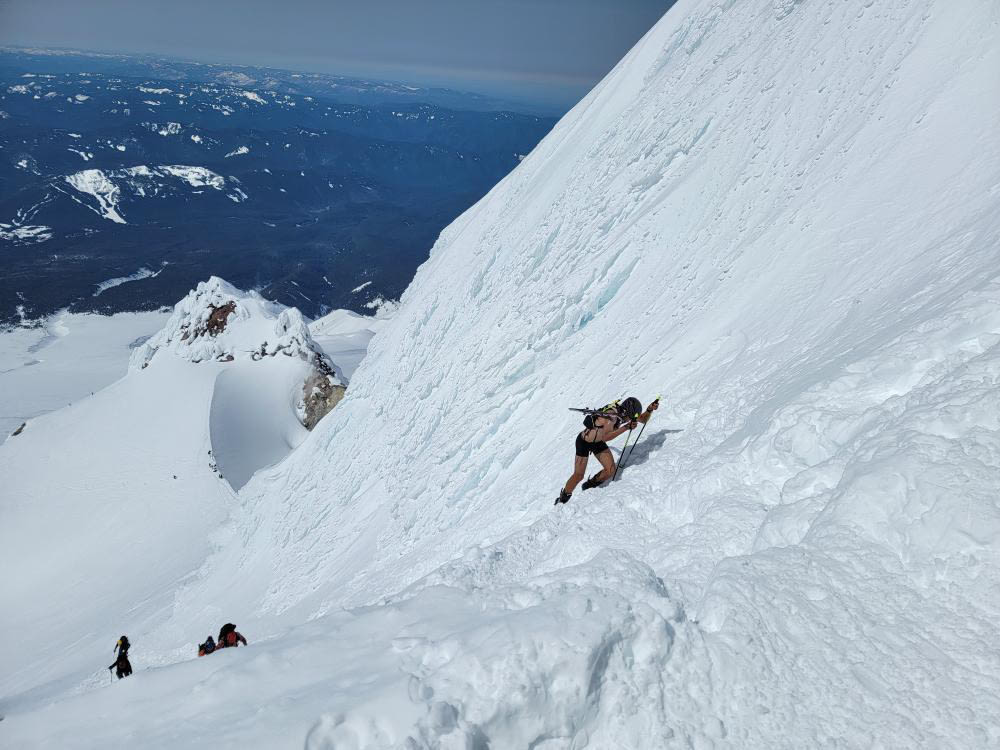
On his way up the mountain.
Image: Courtesy of Jack Kuenzle
He had friends along the route to cheer him on and take pictures, but completed the climb unassisted. Once at the top, he allowed himself to check his watch and see that the record was well within his grasp, Kuenzle said, before starting to ski down (carefully—during his previous attempt on Shasta, both of his skis broke on the downhill run.)
Note: You should not go try to follow in his footsteps next weekend. As an elite athlete and coach, Kuenzle trains essentially year-round to prepare for his record-shattering attempts; there are backcountry safety considerations too, and any one who ventures out that way should have avalanche safety training and gear. His advice for those interested in exploring ski mountaineering: Get yourself in the best shape you possibly can, and sleep at high altitudes to get used to that thin, sharp air.
Still, Oregon’s chain of volcanoes in the Cascades are especially hospitable to ski mountaineering, Kuenzle says. “Oregon, more than any state, maybe Washington, has more potential for this style of racing than any other state,” he says. “The volcanoes are really well suited for it, the conditions are really well suited for it, and the skiing is very safe. There’s no better place.”
